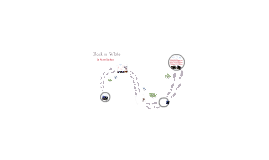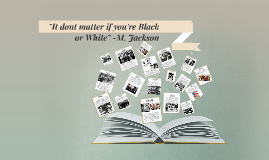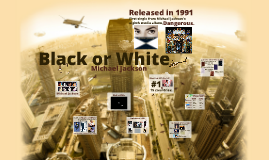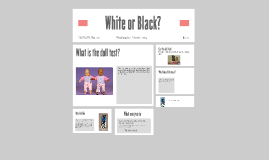Black or White
Transcript: November 11, 1991 Prologue Michael Jackson released a single called 'Black or White' in 1991. It was the first music video to ever use the face morph technique. Through the use of this, the cinematography in Michael Jackson's videos began to elevate. The first few minutes of the video features a section of 'Home Alone' during which an 11 year old is dancing to rock music in his bedroom. This attracts the attention of his father who furiously orders him to stop playing the music and go to bed. The child resolves this by setting up a large sound system behind his father's chair, putting on leather gloves and sunglasses and setting on an electric guitar. The sound shatters and destroys the house windows and sends his father (in the chair) halfway around the world, landing in Africa where Michael Jackson's song begins playing, surrounded by various cultures scene-by-scene. A Marketing Strategy Music plays a big part in films- vice versa. Michael Jackson's song helped promote the release of the film 'Home Alone' through the first few minutes of the video, which featured a section of the film. This is used as a marketing strategy, and could even be classed as a promotional video. 'Black or White's introduction was set out to introduce awareness of the release of Home Alone, and was cleverly incorporated in Michael Jackson's song. The father is sent seated in his chair halfway across the world and landed in Africa. 'It doesn't matter if you're black or white' - Michael's repeated lyrics fits in with what the audience can see in the video; he surrounds himself around a variety of cultures, such as Indian, Native American and Russian, all of which have different skin tones. In his video Michael Jackson walks through visual collages of fire (shouting"I ain't scared of no sheets; I ain't scared of nobody") referring to KKK torch ceremonies. Racism had only recently been banned, therefore Michael Jackson talking about different cultures and 'doesn't matter if you're black or white' lyrics indicate him wanting equality. Controversy and Censorship The last 4minutes of Michael Jackson's music video was seen to be controversial. He walks out of the studio as a black panther and then morphs into himself dancing, grabbing his crotch which was a sexually suggestive scene. In the original version of the song, Michael Jackson was smashing windows and cars. He had later apologized saying that the violent and suggestive behavior was an interpretation of the animal instinct of a black panther. MTV and other music video networks removed the last four minutes from broadcasts. An altered version was created to make the violence more understandable to the public, containing four racial graffiti messages. The uncut version has generally been seen in the US, and on the Jackson's DVD's. The short, censored version continues to air from time to time but despite this, some television channels still broadcast the complete racist graffiti version. How 'Black or White' reflected what was going on in his life The repeated use of lyrics 'It doesn't matter if you're black or white' may indicate a 'cry' for help. This song was released around the same time as when Michael Jackson bleached his skin. These heartfelt lyrics may have been repeated in an 'angry' tone to demand acceptance and equality. Additionally, a poster of Michael Jackson smashed to the ground in the beginning of his video, as the father in Home Alone slams his son's door shut. This may have reflected Michael Jackson's court case and how parents felt about their children listening to his songs or looking up to him. 'Black or White' was released in 1991, and Michael Jackson's child abuse case was publicised in 1993. The shadow in the background of his poster being smashed may have indirectly hinted to the public that he knew what was coming. Black or White By Michael Jackson

















